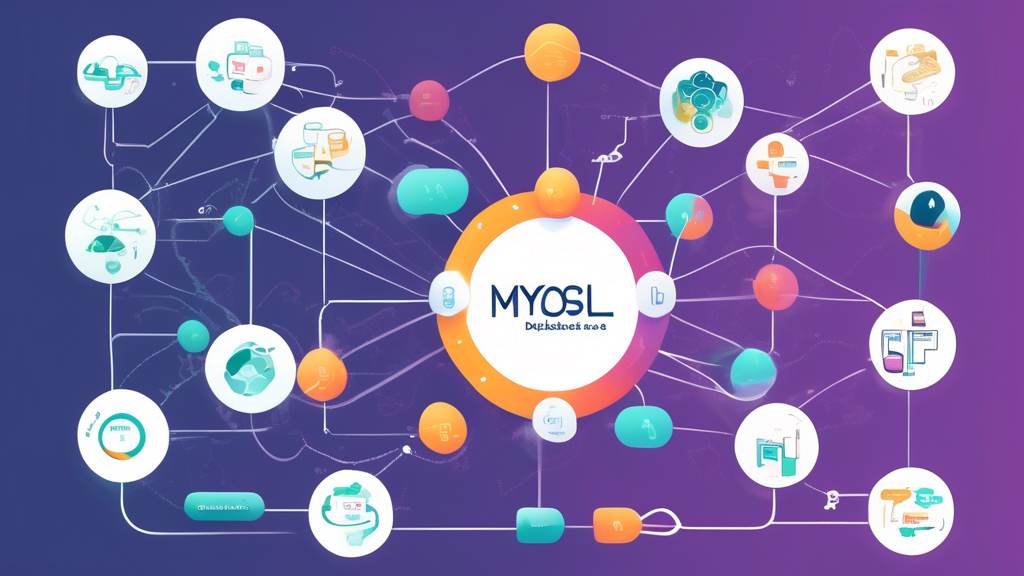Introduction
Imagine creating a dynamic web application that handles vast amounts of data effortlessly. Sounds like a coder’s dream, right? Well, this dream can turn into reality by combining the power of Node.js with the robustness of MySQL. Whether you’re developing a simple application or working on a complex project, understanding how to connect MySQL with Node.js is a skill worth having. In this guide, we’ll walk you through the process step-by-step, making it as easy as pie – or, for our coding enthusiasts, as easy as printing Hello World!
Why MySQL with Node.js?
Before we dive into the how-to, let’s quickly discuss the why. MySQL is one of the most popular relational database management systems, known for its reliability and ease of use. Node.js, on the other hand, is an open-source, cross-platform, JavaScript runtime environment that executes JavaScript code outside a web browser. When you combine MySQL’s efficient data storage and retrieval with Node.js’s non-blocking, event-driven architecture, you get a match made in tech heaven. This duo can handle high volumes of data and numerous client requests simultaneously, making it an ideal choice for real-time applications.
Prerequisites
Before we proceed, ensure you have the following in place:
- MySQL installed on your machine.
- Node.js and npm (node package manager) installed. If not, visit the official Node.js website to download and install them.
- Basic knowledge of SQL (Structured Query Language) and JavaScript.
Got everything ready? Great! Let’s code away.
Step-by-Step Guide to Connecting MySQL with Node.js
Step 1: Setting Up Your MySQL Database
First off, launch MySQL in your system. Create a new database and a table that we’ll interact with through our Node.js application. If you’re unsure about doing this, here’s a quick command line primer:
CREATE DATABASE mynode_db;
USE mynode_db;
CREATE TABLE users (
id INT AUTO_INCREMENT PRIMARY KEY,
name VARCHAR(50),
email VARCHAR(50)
);
Step 2: Creating Your Node.js Application
Create a new directory for your project, navigate into it via your terminal, and initialize a new Node.js project by running npm init. Feel free to hit enter through the setup options or customize them as you see fit.
Step 3: Installing MySQL Driver for Node.js
Node.js communicates with MySQL using a driver. Install the MySQL driver for Node.js by running the following command in your project directory:
npm install mysql
Step 4: Connecting to the MySQL Database from Node.js
Now, let’s write some code to connect our Node.js application to the MySQL database we created earlier. Create a new file, say dbConnection.js, and add the following code:
const mysql = require('mysql');
const connection = mysql.createConnection({
host : 'localhost',
user : 'yourUsername',
password : 'yourPassword',
database : 'mynode_db'
});
connection.connect(function(err) {
if (err) throw err;
console.log('Connected to the MySQL server.');
});
Replace 'yourUsername' and 'yourPassword' with your MySQL credentials. This script establishes a connection to your MySQL database.
Step 5: Running Your Application
To see our connection in action, run the application using:
node dbConnection.js
If everything is set up correctly, you’ll see a message saying ‘Connected to the MySQL server.’ Congratulations, you’ve successfully connected your Node.js application to a MySQL database!
Where to Go From Here?
Now that you’ve established the connection, the world is your oyster. You can start by:
- Executing SQL queries from your Node.js application to create, read, update, and delete data in your MySQL database.
- Exploring Node.js modules like Express to create RESTful APIs that interact with your MySQL database.
- Deploying your application and database to a cloud platform to make it accessible over the web.
Remember, learning to connect MySQL with Node.js is just the beginning. The real fun begins when you start building applications that solve real-world problems. And just like finding a missing semicolon can bring an immense sense of relief, mastering the art of database connections can bring an unmatched feeling of accomplishment.
Conclusion
We’ve now taken a whirlwind tour of connecting MySQL with Node.js. This powerful combination can efficiently handle data for your web applications, making it a worthwhile skill in your development arsenal. As you get more comfortable with these technologies, you’ll discover new ways to optimize and enhance your applications, making them faster, more reliable, and more scalable.
And remember, if at first, you don’t succeed, try clearing the cache. Just a little developer humor to keep the spirits high!
Call to Action
Feeling inspired to dive deeper into web development or need expert guidance on your next project? Visit starmetaversegeorgia.com for all your web development needs. Whether it’s connecting databases or crafting stunning user experiences, we’ve got you covered. Let’s bring your ideas to life, together!

Comments are closed